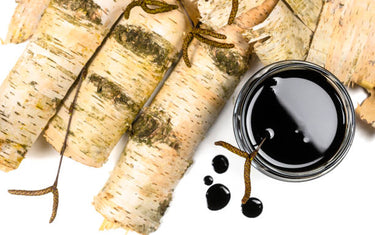8 min read / 19 November 2024 / yasmin sharp
8 Benefits and Uses of Lime Oil
Explore the lesser-known benefits and uses of lime oil, from its historical significance to its modern applications in skincare, immunity, and aromatherapy.

Lime oil is a versatile essential oil with various potential uses.
Historically, the juice and flesh of the fruit has been used in various ways.
The British Navy famously used it to combat scurvy in the late 18th century, which led to American sailors referring to them as ‘limeys’ – a nickname that stuck with British nationals until the mid-20th century.
Research continues to explore potential applications of lime oil.
What is lime oil?Lime oil is extracted from the peel of the fruit, which is typically done by cold pressing the peel of the fruit. However, steam distillation is becoming a popular alternative, especially as in this form it does not contain phototoxic properties. This helps to protect the skin in direct sunlight and also makes it safer to apply topically (provided it is diluted with a carrier oil). Also known by its botanical name, citrus aurantifolia, lime is known for its distinct aroma. Once extracted, it has a pale yellow colour and the oil is commonly used as an ingredient in beverages and for certain cleaning products. |
How does lime oil work?
Lime oil contains various compounds that may contribute to its properties.
For example, terpineol is known to contain antioxidant and anti-inflammatory properties, which can be beneficial for the skin. [1]
Cineole is another compound found in lime oil, which can also provide similar anti-inflammatory and antioxidant benefits for certain therapeutic applications. [2]
When it comes to aromatherapy, the presence of linalool could be the reason why the compound has been found to be an effective natural treatment for anxiety, stress and depression. [3]

What are the benefits of lime oil?
The benefits of lime essential oil may allow it to:
1. Support skin appearance
Like many other types of citrus fruits, limes also contain a host of natural properties that can help to boost skin health.
Limes contain vitamin C, which plays a role in collagen production.
Some research suggests a potential link between vitamin C intake and skin appearance.
This can be important because collagen production slows down as you age, so regular application of vitamin C to the skin can help to encourage the growth of new collagen.
2. Support overall wellness
Lime oil may have properties that support general health.
Test-tube studies found that the production of white blood cells – which help to build protection against diseases and infections - could be increased by the presence of vitamin C. [5]
Research continues to explore the potential effects of vitamin C on common illnesses.
3. Support overall health
Some research suggests lime oil may have properties that support general wellness.
In 2018, researchers released the results of a study that showed how lime oil was able to reduce the activity of the influenza virus by more than 30%, which significantly reduced symptoms in most of the participants. [7]
It is believed that this could be down to the presence of a compound called linalool, which may be the root cause for the activity.
4. Offer soothing properties
Tests have been conducted that have found that lime oil could have a role to lay in reducing bodily inflammation.
This theory is based on the results of a 2016 study that found that along with a handful of other citrus-based essential oils, it produced a significant anti-inflammatory effect. [8]
Some people have also provided anecdotal evidence, as they have seen lime oil reduce inflammation after it has been applied topically.
We would recommend only using steam distilled lime essential oil for topical application, as the cold pressed variety may contain furocoumarins, which can have phototoxic effects on the skin that can cause blistering and burning. [9]
If you are going to apply cold pressed lime oil topically, it is important to always dilute it and to avoid direct sunlight for up to eighteen hours after application.
You should also seek the advice of a medical professional before applying.

5. Support emotional well-being
The benefits of lime oil and vitamin C can provide some relief in moments of high stress and anxiety, which is said to reduce cortisol levels.
Cortisol is often referred to as the ‘stress hormone’ and it can be responsible for regulating anxious responses.
The lower the amount in the body the better, as this can help to produce a calmer mood.
For example, a 2018 study found that during stressful periods, average cortisol levels could rise by as much as 9 times compared to calmer periods. [10]
As is true of other citrus oils, lime essential oil is often said to produce an uplifting effect in those who inhale it, which can reawaken and reinvigorate the senses to brighten their mood.
6. Support cardiovascular health
It is estimated that around 18 million people a year die due to cardiovascular diseases, which is the leading cause of death globally. [11]
Research has found that limes could have a role to play in combating the risk of heart disease, partially due to their high vitamin C content, which can help to reduce blood pressure. [12]
Vitamin C may also be able to offer protection against a disease called atherosclerosis, which can lead to the buildup of plaque in the arteries. [13]
7. Support kidney health
Kidney stones are hard deposits of salts and minerals that, if too large in size, can be difficult to pass out of the system.
If your urine is too concentrated, or if you have a buildup of too much calcium in your urine, it can lead to the formation of stones in your kidneys.
Because limes are high in citric acid, this could allow them to be used to prevent kidney stones, as some citrus fruits (including lime, orange, lemons and grapefruit) can raise citrate levels and bind stone-forming minerals in the urine, as revealed in this 2015 study. [14]
Another study from 2014, also found that eating more citrus fruits helped to reduce the risk of kidney stones. [15]
8. Support nutrient absorption
Iron plays a key role in the creation of red blood cells and in the movement of oxygen around the body.
When the body has low levels, this can cause iron deficiency anaemia, which may lead to dry skin, paleness and shortness of breath during exercise.
Once again, the benefits of lime oil are closely linked to vitamin C, as the fruit can improve the absorption of iron from plant-based foods.
A 2016 study put this theory into practice, with participants seeing iron absorption increase by up to 70% after eating a plant-based meal alongside a 250ml glass of lemonade. [16]

How do you use lime oil?
Here are some potential ways to use lime oil:
An aromatherapy treatment
The aroma of lime oil may create a pleasant atmosphere.
Add a few drops of the oil to an oil burner or diffuser and let the positive scent drift into your senses to help you relax and centre yourself.
You can also enjoy lime oil benefits by adding a few drops to a handkerchief or cotton ball, which allows you to use it no matter where you are.
A cleaning agent
Lime oil may be used as part of a cleaning routine.
To use the oil to attack and remove harmful microbes in the kitchen or bathroom, add a few drops of the oil to a bottle containing water and an emulsifier.
Shake the bottle well and spritz onto surfaces after cleaning.
What is the history of lime oil?
The lime was one of the earliest citrus fruits to be traded, beginning its journey around the world about 3,000 years ago.
After lime oil benefits were enjoyed throughout the Middle East, success in the spice trade saw the fruit find its way to the Mediterranean, before the Moors introduced it to the rest of Europe.
Once Portuguese and Spanish settlers brought limes with them on their excursions to the Americas during the 16th century, the fruit started to gain a reputation for its refreshing and uplifting qualities.
Use of lime oil has continued to expand ever since, and while it is sometimes overshadowed by its fellow citrus fruit family members, there is no denying that its natural properties are cherished and relied on by countless people every day.

Lime Oil FAQs
Is lime oil phototoxic?
Steam-distilled lime essential oil does not contain phototoxic properties, making it the safer option to use for people with sensitive skin.
However, due to the presence of furocoumarin compounds, the cold-pressed variety of lime oil can be phototoxic.
If using cold-pressed lime oil topically, you should ensure it is properly diluted and that you avoid direct sunlight for up to 18 hours after application.
What does lime oil blend well with?
The bright, refreshing scent of lime essential oil always blends well with other citrus oil and it also complements rosewood, rosemary, ylang ylang, neroli and lavender.
This gives you more variety when it comes to creating new blends for aromatherapy and topical treatments.
Is lime oil good for hair?
You could include lime essential oil as an ingredient in a hair mask, as its vitamin C content may be beneficial for your scalp and hair.
Vitamin C aids the production of collagen, which provides strength and support for the skin. Ensuring you have a good amount of vitamin C in your body can also prevent dry hair and split ends.
[1] Chen-Wei Su et al. (2018) Safety and efficacy of 4-terpineol against microorganisms associated with blepharitis and common ocular diseases https://www.ncbi.nlm.nih.gov/pmc/articles/PMC6093255/
[2] Cosima C. Hoch et al. (2023) 1,8-cineole (eucalyptol): A versatile phytochemical with therapeutic applications across multiple diseases https://www.sciencedirect.com/science/article/pii/S0753332223012659
[3] Éverton Renan Quaresma dos Santos et al. (2022) Linalool as a Therapeutic and Medicinal Tool in Depression Treatment: A Review https://www.ncbi.nlm.nih.gov/pmc/articles/PMC9886818/
[4] Maeve C Cosgrove et al. (2007) Dietary nutrient intakes and skin-aging appearance among middle-aged American women https://pubmed.ncbi.nlm.nih.gov/17921406/
[5] Gwendolyn N Y van Gorkom et al. (2018) Influence of Vitamin C on Lymphocytes: An Overview https://pubmed.ncbi.nlm.nih.gov/29534432/
[6] Harri Hemilä (2017) Vitamin C and Infections https://pubmed.ncbi.nlm.nih.gov/28353648/
[7] Hwa-Jung Choi (2018) Chemical Constituents of Essential Oils Possessing Anti-Influenza A/WS/33 Virus Activity https://www.ncbi.nlm.nih.gov/pmc/articles/PMC6296812/
[8] Jorge Luis Amorim et al. (2016) Anti-Inflammatory Properties and Chemical Characterization of the Essential Oils of Four Citrus Species https://www.ncbi.nlm.nih.gov/pmc/articles/PMC4835072/
[9] Marco Kreidl et al. (2020) Determination of phototoxic furanocoumarins in natural cosmetics using SPE with LC-MS https://pubmed.ncbi.nlm.nih.gov/32029113/
[10] Mahmut Cay et al. (2018) Effect of increase in cortisol level due to stress in healthy young individuals on dynamic and static balance scores https://www.ncbi.nlm.nih.gov/pmc/articles/PMC6371989/
[11] W.H.O. (2021) Cardiovascular diseases (CVDs) https://www.who.int/news-room/fact-sheets/detail/cardiovascular-diseases-(cvds)
[12] Stephen P Juraschek et al. (2012) Effects of vitamin C supplementation on blood pressure: a meta-analysis of randomized controlled trials https://pubmed.ncbi.nlm.nih.gov/22492364/
[13] Melissa A. Moser et al. (2016) Vitamin C and Heart Health: A Review Based on Findings from Epidemiologic Studies https://www.ncbi.nlm.nih.gov/pmc/articles/PMC5000725/#:~:text=Therefore%2C%20the%20prevention%20of%20LDL,C%20can%20reduce%20cardiovascular%20risk.
[14] Domenico Prezioso et al. (2015) Dietary treatment of urinary risk factors for renal stone formation. A review of CLU Working Group https://pubmed.ncbi.nlm.nih.gov/26150027/
[15] Shubha K De et al. (2014) Changing trends in the American diet and the rising prevalence of kidney stones https://pubmed.ncbi.nlm.nih.gov/25201150/
[16] Anamika Singh et al. (2016) Effect of inclusion of key foods on in vitro iron bioaccessibility in composite meals https://pubmed.ncbi.nlm.nih.gov/27413231/









